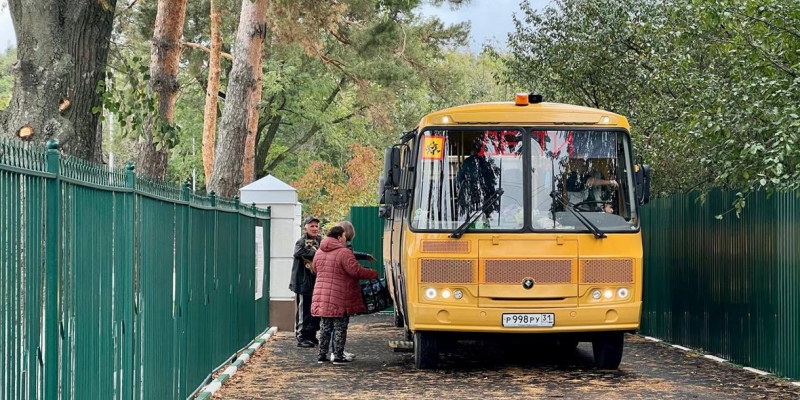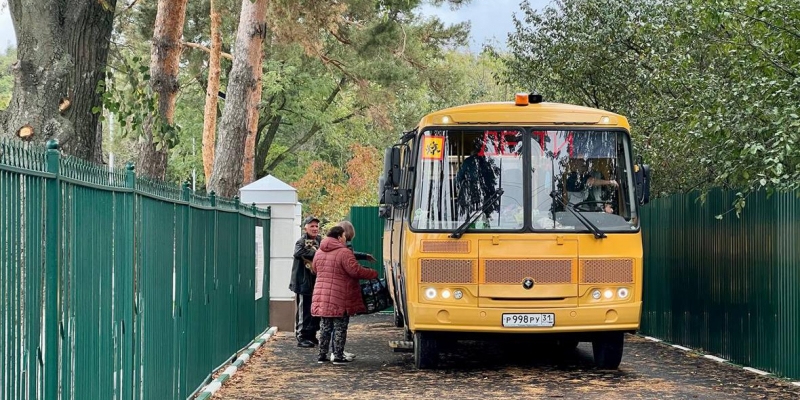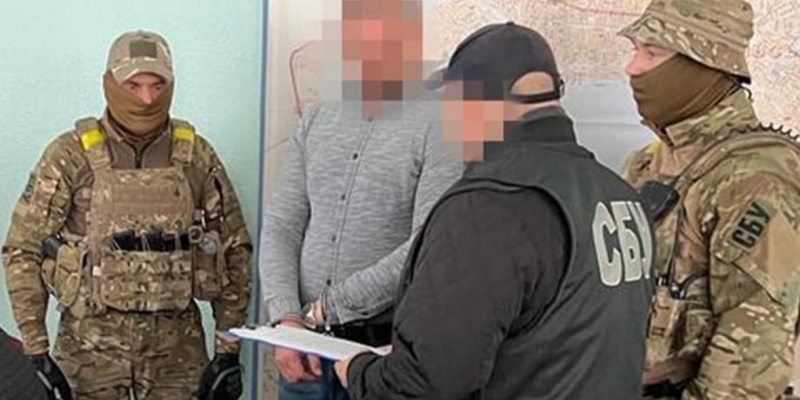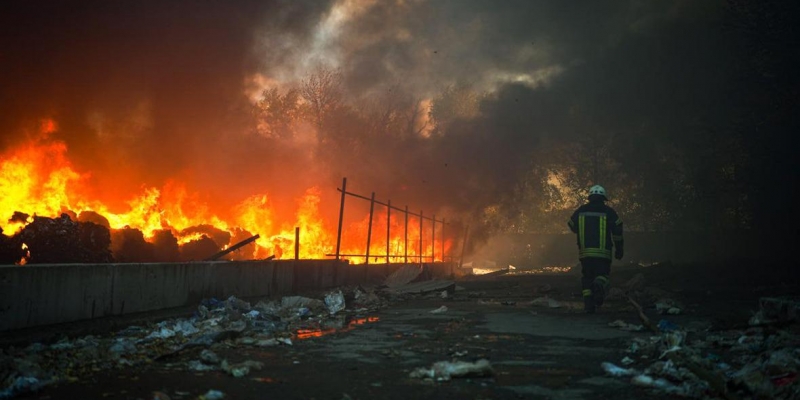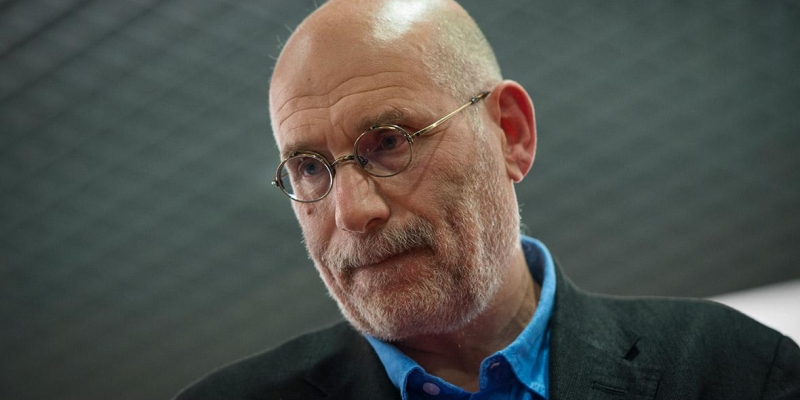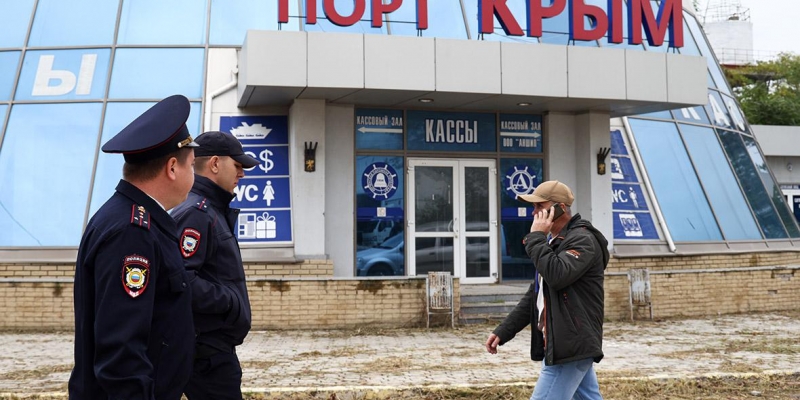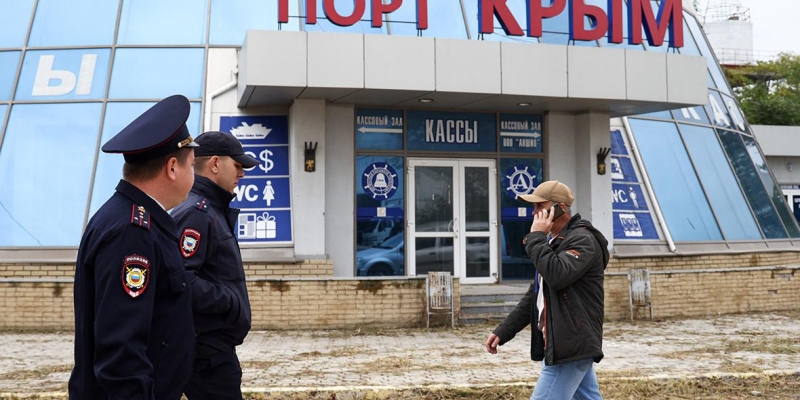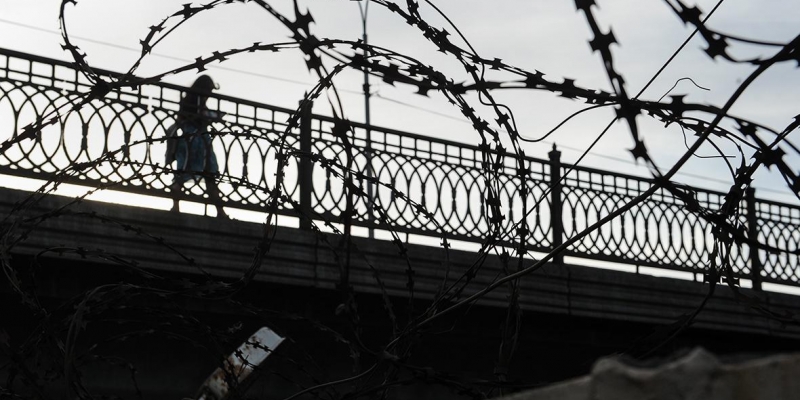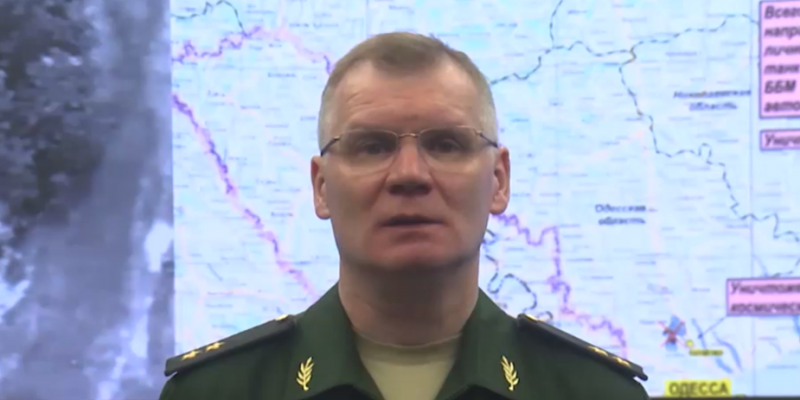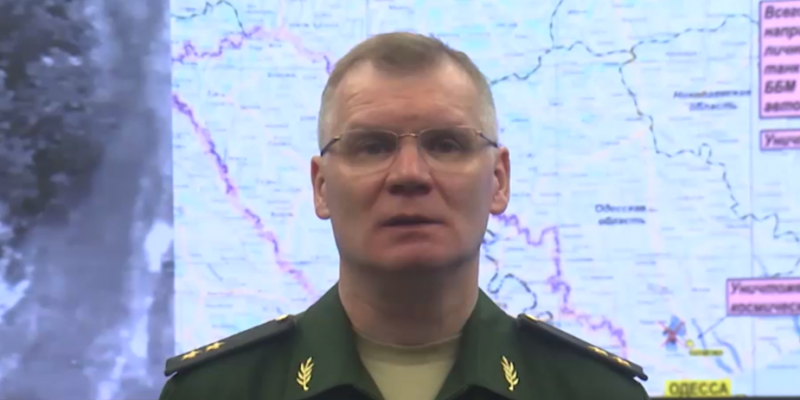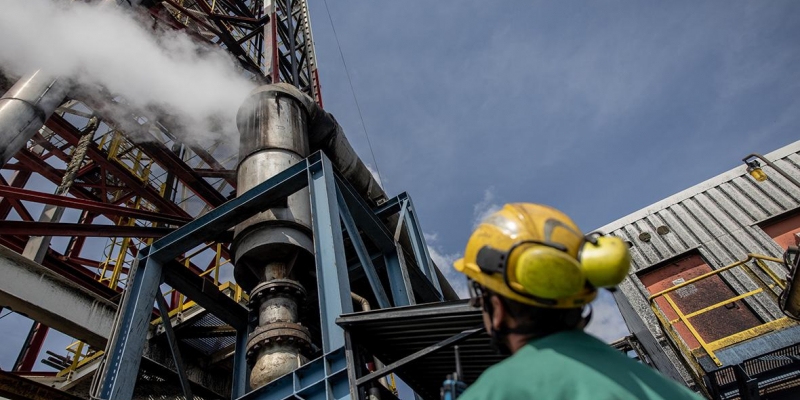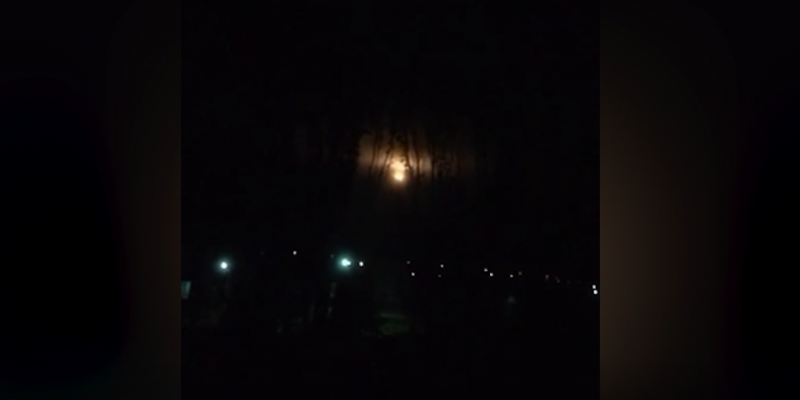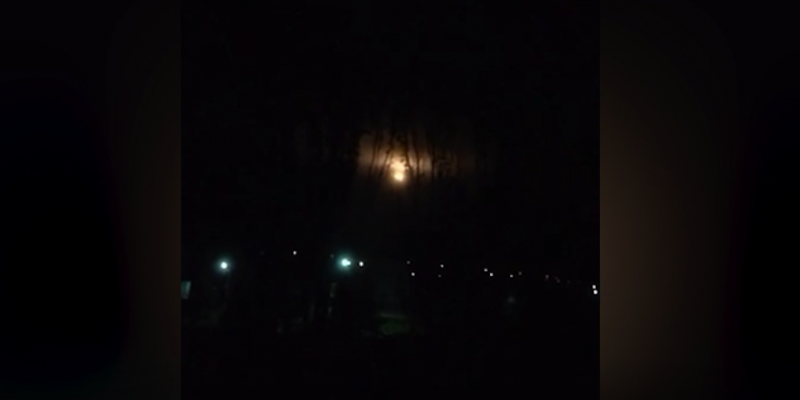In The DPR will not restrict departure from the region, 500 residents of the Belgorod region have been relocated to the Moscow region, some of the region’s enterprises will work remotely. The main thing about the special operation is in the RBC material * The main thing is by 21:45 Moscow time The DPR authorities are not going to impose restrictions on the departure of citizens from the region and change the curfew regime due to martial law, said the acting head of the republic Denis Pushilin. The governor of the Belgorod region Vyacheslav Gladkov recommended to all employers to transfer employees of enterprises on the border territories and in Belgorod to a remote work format. Residents of the Belgorod region will be resettled in a sanatorium near Moscow, the Moscow region will accept 500 people from the region. Accommodation for them will be free. In addition, school holidays have been extended in the region, universities are recommended to switch to remote. Citizens of Ukraine who have lost their documents will be able to return from Russia with the help of a special identity card, it will be issued free of charge within five days. As stated by the Prime Minister of Ukraine Denis Shmygal, this also applies to those who, according to Kiev, were “deported to Russia”. The certificate can be obtained by family members of Ukrainians abroad in the migration service, as well as by contacting the Ministry of Reintegration of the Temporarily Occupied Territories. Latest news about the military operation Chronicle of military operations Supplies of foreign weapons to Ukraine What sanctions have been imposed against Russia Vladimir Putin’s emergency appeal What preceded the military operation Latest news about the military operation The governor of the Belgorod region Vyacheslav Gladkov said that due to a direct hit by a shell, a fire broke out at one of the industrial enterprises in the Shebekinsky city district. “According to preliminary data, there is one victim. A medical team is already taking her to the hospital. All operational services are in place. More detailed information will be provided later,” he wrote in a Telegram. Alexander Lukashenko does not want Belarusian military drones to be used in combat operations in Ukraine. As BelTA reports, he said this at the Obuz-Lesnovsky training ground in the Brest region, where he was shown the developments of the Belarusian military-industrial complex. «Who buys— to whom we will sell. It is undesirable, of course, for our samples to fight in Ukraine: after all, their own people”. The Ministry of Culture of Russia reacted to the message that Boris Akunin’s name was removed from the posters of two Moscow theaters. “Those cultural figures who left the country at this difficult time, abandoned Russia, who publicly opposed its rich culture, absolutely logically leave our institutions and their posters one after another. InThe Ministry of Culture of Russia receives a large number of appeals from citizens who are outraged by the presence of such figures in information and advertising materials of state institutions. This request comes primarily from society, and we cannot and should not ignore it,” says the response of the press service of the Ministry of RBC. The Russian Defense Ministry reported that on October 21, the head of the military department, Sergei Shoigu, held talks with the head of the Pentagon, Lloyd Austin. “Topical issues of international security were discussed, including the situation in Ukraine,” the Ministry of Defense said in a statement. Dmitry Peskov said that after Sergei Shoigu’s telephone conversation with Pentagon chief Lloyd Austin, there are no plans for Vladimir Putin to talk with Joe Biden. “There is no agenda,” he told the TASS news agency. The head of Crimea, Sergey Aksenov, commented on the statement of the Secretary of the National Security Council of Ukraine, Alexey Danilov, that “the Russian language should disappear from the territory of Ukraine”. “It’s not the Russian language that will disappear, but Ukraine, which is led by such characters. Danilov is a clear example of what a former Russian man can turn into, who sold his dignity and the memory of his ancestors for a rotten Bandera soup,” Aksenov wrote in his Telegram. The Ministry of Defense at the beginning of next week will decide on the exemption from conscription as part of the partial mobilization of men who have two children and a pregnant wife for more than 22 weeks. This was reported to TASS by the head of the State Duma Committee on Family, Women and Children Nina Ostanina after a meeting with Deputy Defense Minister Nikolai Pankov. Turkish President Recep Erdogan said that he considers it possible to establish peace between Russia and Ukraine with Turkish mediation. “I see that Mr. Putin has softened his position and is much more open to negotiations than before,” the Turkish leader told reporters. Vladimir Putin October 19 announced the decision to introduce martial law in the DPR, LPR, Zaporozhye and Kherson regions. On the territory of the Crimea, Krasnodar Krai, Belgorod, Bryansk, Voronezh, Kursk, Rostov regions and Sevastopol, a medium-level response regime is being introduced. Among other things, we are talking about the introduction of a special mode of operation of facilities that ensure the functioning of transport, communications and communications, energy facilities, a special regime for entering and leaving the territory, restricting the movement of vehicles, carrying out their inspection. In other regions that are part of the Central Federal District and the Southern Federal District, a high alert level is being introduced, within the framework of which the protection of public order and ensuring public safety, control over the operation of facilities that ensure the functioning of transport, communications and communications are strengthened. In other regions of Russia, the level of basic readiness is being introduced. Presidential spokesman Dmitry Peskov told RIA Novosti that there are no plans to close borders in light of the introduction of martial law in four Russian regions. The head of the LPR Leonid Pasechnik told the RIA Novosti news agency that there would be no innovations for residents of the region in connection with the introduction of martial law. “Luhansk region has been living under martial law for eight years, and the decree is aimed at its registration within the framework of Russian legislation,” he explained. The head of the DPR Denis Pushilin called the timely decision to impose martial law in new regions of Russia. According to him, in reality, the DPR has been under martial law for the last eight and a half years. The authorities of the Kursk region will strengthen the access regime on the territories bordering Ukraine, as well as at the entrance to the city of Kurchatov, where the Kursk NPP is located. According to the governor of the region Roman Starovoit, the protection of infrastructure and education facilities will also be strengthened in the region. The head of North Ossetia, Sergei Menyailo, said on October 21 that he had ordered the removal of the Upper Lars and Lower Zaramag mobile call points from the checkpoint, which had been operating there for several weeks. “Today, the flow of citizens who cross the state border has subsided,” In addition, the Federal Border Service has all the necessary information and lists about citizens for whom exit from the country is restricted,” he wrote in his Telegram channel. About 10 thousand mobilized across the country were returned home for various reasons, said the head of the State Duma Committee on Defense Andrei Kartapolov. On September 21, Russian Defense Minister Sergei Shoigu called the volume of losses in the special operation. According to him, Russia’s losses amounted to 5,937 people. Ukraine since the beginning of the special operation has lost more than 100 thousand people. 61207 dead and 49368 wounded – this is half of her original army. Chronicle of military operations October 18 The Russian Defense Ministry reported that units of the Russian army captured the settlement of Gorobevka, Kharkiv region (northeast of Kupyansk). October 7th The DPR territorial defense headquarters reported that the settlements of Otradovka, Veselaya Dolina and Zaitsevo are occupied in the Bakhmut area. The Russian Defense Ministry reported on the occupation of Zaitsevo the day before. September 22 The headquarters of the territorial defense of the DPR reported that the grouping of the DPR and LPR troops with the fire support of the Russian Armed Forces occupied the settlement of Zhovanka (south of Bakhmut). September 15th The headquarters of the territorial defense of the DPR reported that the servicemen of the Donetsk and Lugansk People’s Republics took control of the village of Mayorsk, fire support in this was provided by Russian troops. The village of Mayorsk is located on the northern outskirts of the city of Gorlovka in the Donetsk region. In this area there was one of the checkpoints of entry and exit from the DPR to the territory of Ukraine. The Headquarters of the Defense Ministry of the Republic also published a map according to which further advance of the troops is planned to continue to the north in the direction of Bakhmut. September 14th The headquarters of the territorial defense of the DPR reported the occupation of the settlements of Nikolaevka and Nikolaevka Two south of Bakhmut. September 10th The Russian Defense Ministry announced an operation to curtail and transfer the Izyumsko-Balakleya group of troops to the territory of the DPR. September 7th The Russian Defense Ministry announced the occupation of Kodema (southeast of Bakhmut/Artemovsk). According to the statement of the defense Ministry, the Ukrainian troops have not carried out any offensives over the past day. September 6th The headquarters of the territorial defense of the DPR reported the occupation of two more settlements. We are talking about Vremevka and Novopol (to the west of Velikaya Novoselka). On this day, the Russian Defense Ministry reported on the ongoing attempts of the Ukrainian army to attack in certain areas of the Mykolaiv-Krivoy Rog direction. September 2nd Russian Defense Minister Sergei Shoigu confirmed that Ukraine continues to attempt to conduct an offensive in Mykolaiv-Krivoy Rog and other directions. According to the minister, “the enemy is suffering significant losses.” September 1st The Ministry of Defense reported on the landings of Ukrainian troops in the area of the Zaporozhye NPP. One landing party on seven boats consisting of two groups of 60 people landed at about 06:00 Moscow time on the coast of the Kakhovsky reservoir 3 km northeast of the station. They were blocked by Russian forces with the help of army aviation helicopters. Three people from the group were captured in the evening, part ofthe servicemen continued to resist, some died. The second group left Nikopol on two self-propelled barges and tried to disembark at about 07:00 Moscow time a few kilometers from the NPP, but was, according to the defense department, sunk along with the barges as a result of shelling. This group, presumably, was sent to the NPP as reinforcements for the first landing. On the same day, the Ministry of Defense announced two new attempts of the offensive by Ukrainian forces: in the southern direction, in the area of Nikolaev and near Kharkov. According to the defense ministry, the Ukrainians failed to achieve success. August 31 The Ministry of Defense again reported on the attempts of attacks by Ukrainian troops in the Mykolaiv-Krivoy Rog direction. The APU attacked the settlements of Arkhangelsk, Olgino and Ternovye Pody, the attacks were repulsed, the APU suffered significant losses and were repulsed. August 29 and 30 The Ministry of Defense reported on the offensive of the Armed Forces of Ukraine in the south of the country: in the Kherson and Mykolaiv regions, as well as from the Krivoy Rog. The Russian military repulsed the attacks, reported the defeat of the advancing units, numerous losses among the Ukrainian troops and a significant amount of destroyed equipment. Statements of the Ministry of Defense about the Ukrainian offensiveThey appeared after the CNN publication about the preparation by the Ukrainian side of the necessary conditions for a serious counteroffensive. Initially, Zelensky’s office denied reports appearing in the media about plans for an offensive in the south of the country, but then the press secretary of the Southern Military Command of Ukraine Natalia Gumenyuk confirmed them. August 24 The Ministry of Defense reported on how many Ukrainian weapons were destroyed by the Russian military during the six months of the special operation. Among them are 268 aircraft, 148 helicopters, 1803 drones, 369 anti-aircraft missile systems, 4382 tanks and other armored combat vehicles, 819 multiple rocket launchers, 3339 field artillery and mortars, as well as 5034 units of special military vehicles. August 23 The Russian military came to the administrative border of the Mykolaiv region, the Ministry of Defense reported. According to the department, they managed to establish control over the territory of the region with an area of 12 sq. km. The Ministry announced that it had taken control of 36 sq. km of the territory of the Kherson region, including the village of Komsomolskoye. August 21 The head of Chechnya, Ramzan Kadyrov, announced the liberation of the village of Peski near Donetsk; the Russian Defense Ministry declared full control over the settlement a week ago. August 18 The headquarters of the territorial defense of the DPR reported that the grouping of troops of the Donbass republics “with the fire support of the Armed Forces of the Russian Federation” liberated 270 settlements on the territory of the republic, including Zaitsevo and Dacha (both located north of Gorlovka). August 17th The headquarters of the territorial defense of the DPR reported control over the settlement of Vershina (southwest of Artemovsk/Bakhmut). August 14 The Russian Defense Ministry announced the occupation of the settlement of Udy in the Kharkiv region. August 13 The Russian Defense Ministry announced the occupation of the village of Peski (west of Donetsk). August 3 The DPR territorial defense headquarters reported the occupation of the settlements of Travnevoye and Semigorye (south of Artemovsk/Bakhmut). July 29 The DPR territorial defense headquarters reported control over the villages of Klinove and Pokrovskoye (east of Bakhmut). July 26 Assistant to the head of the Ministry of Internal Affairs of the LNR Vitaly Kiselyov reported on the occupation of the Uglegorskaya TPP, which is located opposite Svetlodarsk (east of Bakhmut/Artemovsk). On this day Kiselyov reported on the occupation of Novoluganskoye (east of Bakhmut/Artemovsk). On July 20, the DPR territorial defense headquarters announced the occupation of the village of Berestove (north of Soledar). On July 19, the DPR territorial defense headquarters announced the occupation of the village of Staromayorskoye (south of Velikaya Novoselka). July 14 The People’s Militia of the LPR reported the occupation of the settlements of Stryapovka and Novaya Kamenka (east of Soledar). July 14 The Territorial Defense Headquarters reported that the People’s Militia of the DPR, with the support of the Russian army, occupied the following settlements: Novodonetsky, Neskuchnoye, Oktyabr (south of Velikaya Novoselka), Mironovka, Krasny Plowman, Companies, Vidrodzhennya, Copper Ore (east of Artemovsk/Bakhmut) and Kamenka (north of Avdiivka). July 13 Assistant Interior Minister of the LPR Vitaly Kiselyov told the TASS news agency that the People’s Militia forces entered the city limits of Soledar (south of Lisichansk). Earlier, TASS, with reference to Kiselyov, reported on the beginning of the battles for Seversk. July 12 The Russian Defense Ministry has accused the Ukrainian military of mining bridges across the Seversky Donets River in the village of Nikolaevka (DPR). “They intend to blow them up and, according to an already worked-out scenario with wide coverage in the Ukrainian and Western media, accuse the Russian armed forces of allegedly indiscriminate strikes on critical transport infrastructure facilities,” the report says. Then, July 12, the head of the LPR Leonid Pasechnik said that the units of the People’s Militia will continue the offensive, as Ukrainian troops continue to shell the territory of the republic. “The units of the People’s Militia of the LPR will be forced to continue our movement forward in order to push the enemy to a safe distance so that their equipment and weapons, ammunition do not reach our territory,” the Lugansk Information Center quotes him. July 11 The official representative of the People’s Militia of the LPR, Ivan Filiponenko, announced the capture by the forces of the republics of Donbass of the settlements of Vladimirovka and Tripolye in the DPR (east of Soledar). July 10th The LPR ambassador to Russia Rodion Miroshnik said that the troops continue to attack the city of Seversk in the DPR. He also told about the capture of the village of Grigorovka. July 6 The headquarters of the territorial defense of the DPR reported the occupation of the settlement of Disputable (east of Seversk). July 3 Sergei Shoigu reported to Vladimir Putin that the Russian Armed Forces, together with units of the People’s Militia of the Luhansk People’s Republic, have established full control over the city of Lisichansk.. July 2 The Ministry of Defense reported that as a result of successful offensive actions, the troops of the group “Center” under the command of Colonel-General Alexander Lapin captured the settlements of Verkhnekamenka, Zolotarevka, Belogorovka. In addition, the settlements of Novodruzhesk, Maloryazantsevo and Belaya Gora were occupied. July 1st The Ministry of Defense reported on the advance of the Russian Armed Forces and the formations of the LPR and DPR near Lisichansk and their exit directly to the city. The Lisichansk oil refinery, the Matrosskaya mine, the gelatin plant, as well as the village of Topolevka were taken under control. On this day, a representative of the People’s Militia of the LPR reported on the occupation of the villages of Privolye and Shipilovka (west of Lisichansk). On the afternoon of June 30 the headquarters of the territorial defense of the DPR announced the occupation of the village of Sidorovo (located south of Svyatogorsk). On the morning of June 30, the Ministry of Defense announced the withdrawal of the garrison from Zmeiny Island in the Black Sea as a step of goodwill. June 27 Assistant to the Interior Minister of the LPR Vitaly Kiselyov said on the air of the TV channel “Russia 24” that the republican forces and the Russian military have completed the sweep of Volcheyarovka (a village southwest of Lisichansk). June 26 The Russian Defense Ministry announced the occupation Severodonetsk and nearby localities (including Voronovo and Borovskoye). June 24 The Russian Defense Ministry reported that as a result of successful offensive actions by a group of Russian troops in the Luhansk direction, the settlements of Loskutovka, Podlesnoye, Mirnaya Dolina, Shchebkaryor, Vrubovka, Nyrkovo, Nikolaevka, Novoivanovka, Ustinovka and Rai-Alexandrovka were liberated in five days. June 24 The representative of the People’s Militia of the LPR, Andrei Marochko, told Interfax about full control over the settlements of Zolotoye and Gorskoye (east of Lisichansk). June 23 Andrei Marochko on the air of the TV channel “Russia 1” said that the forces of the LPR and Russian units entered the village of Katerinovka (southwest of Zolotoye). On this day, the LNR Ambassador to Russia Rodion Miroshnik reported on the cleaning of the village of Loskutovka (south of Lisichansk). June 22 The People’s Militia of the LPR reported the occupation of the village of Metelkino (near Severodonetsk). June 20 Assistant to the Interior Minister of the LPR Vitaly Kiselyov announced the occupation of the village of Toshkovka (southeast of Lisichansk). June 10 The headquarters of the territorial defense of the DPR reported that the People’s Militia, with the fire support of the Russian army, established full control over four villages: Tripolye, Vladimirovka, Stavki and Lipovoe. June 7 Sergei Shoigu reported on the occupation of Svyatogorsk, Yampol, Drobyshevo, Yarovaya, Kirovsk, as well as residential quarters Severodonetsk. June 6 The headquarters of the territorial defense of the DPR reported on the establishment of control over the settlements of Pokrovskoye and Zeleny Guy (in the area of Ugledar).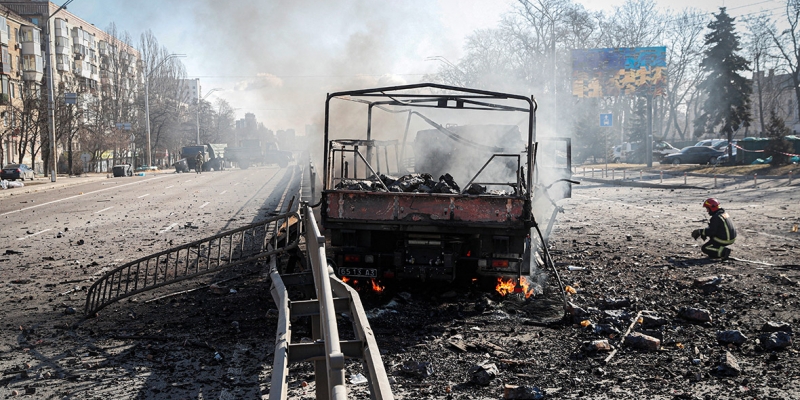
On June 3, the headquarters of the territorial defense of the DPR reported on the establishment of control over the settlements of Yarovaya and Shchurovo.
May 30 The DPR authorities reported the advance of the People’s Militia to Slavyansk and the occupation of the settlements of Dibrova and Old Caravan (west of the Estuary).
May 28 The Russian Defense Ministry reported that the city of Krasny Liman (Estuary) in the Donetsk region was taken under control by the Russian military.
May 24 The flag of Russia was raised over the city hall Svetlodarsk (northeast of Gorlovka).
May 21 The Ukrainian units defending the Azovstal metallurgical plant in Mariupol surrendered.
Mariupol was blocked by Russian troops and the People’s Militia of the DPR on February 28. A month later, Ukrainian units, including the Azov regiment (its symbols are recognized as extremist and banned in Russia), were blocked on the territory of the Azovstal Metallurgical Plant. It was decided to abandon the storming of the plant with numerous underground structures. Attempts by the Ukrainian military to evacuate the blocked units ended in failure, after which negotiations on surrender began.
May 17 a representative of the People’s Militia of the LPR reported that the units of the republic managed to occupy the village of Orekhovo (east of the city of Zolotoe).
May 16 parts of the LPR occupied the village of Novozvanivka (north of the town of Popasnaya).
May 12 the Defense Ministry of the LPR reported that the People’s Militia pushed Ukrainian servicemen away from Popasnaya.
How Popasnaya suffered in the LPR from the fighting. Video
May 11 The head of Chechnya, Ramzan Kadyrov, said that during the joint offensive of the People’s Militia of the LPR and the Akhmat unit, the settlements of Yuzhny and Voevodovka, the gunpowder factory Zarya, as well as several suburban settlements to the north and northwest of Severodonetsk were occupied.
May 5th The People’s Militia of the DPR occupied the village of Troitskoye, from which the shelling of Gorlovka was conducted.
April 25 The People’s Militia of the LPR reported the occupation of the village of Novotoshkovskoye (northeast of Popasnaya).
April 16 The Ministry of Defense announced the taking under control of the Ilyich Metallurgical Plant in Mariupol.
April 11 The Russian Defense Ministry announced the occupation of the village of Kamenka in the Kharkiv region. The military department noted that it was “one of the most fortified defense lines in the Izyumsky district”.
April 1st in Ukraine, the first publications appeared about the discovery of the bodies of civilians in the city of Bucha Kiev region, which was previously abandoned by Russian troops. Then Kiev announced the death of hundreds of residents of Bucha and blamed the incident on Russian servicemen. In Moscow, the incident was called a staging, pointing out a number of inconsistencies. After the events in Bucha, the negotiation process between Russia and Ukraine was actually frozen.
March 31 The Ministry of Defense announced the full occupation of the settlement of Zolotaya Niva. Russian units crossed the Kashlagach River.
On this day, the LNR units completed the cleanup of the Zhitlovka.
March 29 the Russian army began to leave Kiev, Chernihiv and Sumy regions. The Kremlin called it a gesture of goodwill in the interests of the negotiation process.
During March, negotiations were held between the delegations of Russia and Ukraine. Initially, the meetings were held in Belarus, and the last meeting was held in Istanbul on March 29. According to its results, the head of the Russian delegation, Vladimir Medinsky, announced the coordination of a number of positions, and Deputy Defense Minister Alexander Fomin promised a drastic reduction in military activity in the Kiev and Chernihiv directions.
March 28 The People’s Militia of the LPR captured the settlements of Ivanovka, Novosadovoye, having reached the border of Novolyublino— Terny.
March 25 The Ministry of Defense announced the occupation of the settlements of Batmanka, Mikhaylovka, Krasny Partizan, Stavki and Troitskoye.
March 24 The Ministry of Defense stated that the Russian armed forces took full control of the city of Izyum in the Kharkiv region.
March 22 The Ministry of Defense announced the loss of Kiev’s control over ten settlements. The Russian military occupied the village of Urozhnoye in the Donetsk region, the forces of the Donetsk People’s Republic took four settlements: Slavnoye, Trudovskoy, Chelyuskintsev Mine and Maryinka. Five more Ukrainian settlements came under the control of the People’s Militia of the LPR: Kalinovo, Novoaleksandrovka, Stepnoye and Boguslavskoye.
March 13 The Russian Armed Forces have established full control over the settlements of Pavlovka, Nikolskoye, Blagodatnoye, Vodianovka, Vladimirovka.
March 11 The People’s Militia of the DPR seized Volnovakha.
March 9th in The Russian Defense Ministry reported that units of the Russian armed forces took control of the settlements of Krasnaya Polyana and Stepnoye. The People’s Militia of the LPR occupied Grachevo, the People’s Militia of the DPR – Signal, Taramchuk, Elenovka and Trudovoye.
March 4 The Russian Defense Ministry reported that the People’s Militia of the LPR occupied several settlements: Shandrigolovo, Alexandrovka, Derilovo, Srednoye, Lozove. The People’s Militia of the DPR occupied four settlements: Rozovka, Truzhenka, Znamenovka and Potbellied. Russian troops occupied several settlements in the Zaporozhye region, including the city of Canopies.
March 3 The Russian Ministry of Defense announced the occupation of the city of Balakleya (Kharkiv region). In addition, Russian troops took control of several settlements in the Zaporozhye region, including Blue Mountain, Sweet Beam, Ilchenkovo. The DPR forces surrounding Mariupol occupied the village of Vodiane, as well as Sartana and Vinogradnoye.
March 2 The Russian Defense Ministry announced the establishment of control over Kherson, as well as Vasilevka and Tokmak (Zaporozhye region). In the Luhansk region, the People’s Militia of the LPR established control over the cities of Starobilsk and Svatovo, as well as the district center of Novoaydar.
February 27 The Russian Defense Ministry announced the blocking of Kherson and Berdyansk, as well as the occupation of Genichesk (Kherson region). The People’s Militia of the LPR occupied the settlements of Novoakhtyrka, Smolyaninovo (east of Severodonetsk), the Village of Lugansk.
February 26 The Russian Defense Ministry reported that Russian troops took full control of Melitopol overnight..
February 25 the Ministry of Defense announced the occupation of Snake Island in the Odessa region of Ukraine. The Snake garrison laid down their arms.
February 24 The Border Service of Ukraine reported attacks and shelling along the entire border from the Zhytomyr region (bordering only with Belarus) to Lugansk, as well as from the Crimea. Military facilities throughout the territory of Ukraine were subjected to rocket attacks. Later it became known that the Russian army crossed the border in Kiev, Chernihiv, Sumy, Kharkiv and Kherson regions. At the same time, the People’s Militia of the LPR launched attacks on the cities of Happiness and Stanytsia Luhanska to the north of Lugansk, and the People’s Militia of the DPR launched an offensive on Mariupol and Volnovakha.
At the request of Roskomnadzor, RBC provides data on the details of the military operation in Ukraine based on information from Russian official sources.
Supplies of foreign weapons to Ukraine
NATO countries and their allies have been increasing arms supplies to Kiev since the beginning of the special operation. If initially we were talking about helmets, bulletproof vests, unmanned aerial vehicles (Turkish Bayraktar), then they began to send old Soviet weapons to Ukraine, which were still stored in warehouses in Poland, Slovakia, and the Czech Republic.
Over time, Ukraine began to supply weapons that were produced in NATO countries and Australia. It was about armored vehicles (British Saxon, Australian Bushmaster), anti-tank complexes (Javelin, NLAW), artillery installations (French Caesar, American HIMARS).
You can read more about military supplies to Ukraine here.
What sanctions have been imposed against Russia
Packages of sanctions against Russia began to be introduced even before the start of the special operation in Ukraine, after the recognition of the DPR and LPR. The restrictions were announced by the USA, Canada, the EU, Japan, Australia, New Zealand, Great Britain, Switzerland, Iceland and a number of other countries.
There were six waves of sanctions in total. The United States, the United Kingdom, and the EU stated that they were coordinating efforts to weaken the Russian economy, but restrictions were not always imposed synchronously. There were also certain differences, which in the West were explained by the unwillingness to harm their own economies. There were also differences in personal sanctions. For example, the United States imposed restrictions on 663 people, and the United Kingdom imposed restrictions on more than 1,000 businessmen, politicians, military personnel, media employees, people who were considered close to Putin in London.
The first The wave concerned banks financing the military industry, State Duma deputies who supported the recognition of the DPR and LPR. VEB, which is the lender of many companies, the operator of national projects, the curator of other development institutions and the manager of pension savings of almost 40 million Russians, also came under sanctions.
The second wave of sanctions it began after the start of the special operation. The UK has imposed restrictions on 100 individuals and companies, including VTB, Rostec and Aeroflot. The amounts of deposits and deposits for Russian citizens in UK banks were limited to 50 thousand US dollars. All transactions with new debt obligations with a maturity of more than 14 days were limited to a number of companies (including Gazprom, Russian Railways, Alfa-Bank). Personal sanctions affected Vladimir Putin, Sergey Lavrov, Sergei Shoigu.
The EU has imposed restrictions, including against Russian Railways, Uralvagonzavod, KAMAZ, Alfa-Bank, Otkritie, Bank of Russia and Promsvyazbank. Banks were banned from selling euro-denominated securities to clients from Russia, as well as listing shares of any Russian state-owned companies (with a state share of over 50%) on European exchanges. In addition, insurance of Russian aircraft was banned, and a ban was imposed on the sale and leasing of airliners, spare parts and equipment to Russian airlines.
By March 10, the EU, the United Kingdom, Bosnia, Norway, the United States, Switzerland, Montenegro, and the United Kingdom had closed the airspace for Russian aircraft. A little later, Canada did it too. A number of airlines refused flights to Russia.
The third wave of sanctions it began on February 26. The reserves of the Bank of Russia in the G7 countries were frozen, five banks were disconnected from the SWIFT system. The UK has closed ports for Russian ships, as well as exports of high-tech goods to Russia. On the territory of the EU and the UK, the assets of a number of businessmen were frozen, including Igor Sechin, Mikhail Fridman, Peter Aven.
On March 2, the EU banned the sale, supply, transfer and export of euro banknotes to Russia.
On March 8, the United States announced a ban on oil, gas and coal supplies from Russia.
Since March 10, Visa and Mastercard have stopped working in Russia. The owners of Russian cards of these payment systems have lost the opportunity to pay with them outside the country or pay for purchases in foreign stores.
On March 10, the UK imposed sanctions, including against Roman Abramovich, Andrei Kostin, Oleg Deripaska. Their assets were frozen, British citizens were banned from cooperating with them.
On March 11, the United States banned the supply of dollar bills to Russia, the import of alcohol and seafood from Russia.
On March 12, Bermuda cancelled the flight certificates of 740 aircraft registered there by Russian airlines.
The fourth wave of sanctions it began on March 15. The import of Russian steel products into the EU was banned, and the export of luxury goods to Russia was banned.
On April 4, the United States banned Russia from using reserves frozen in the United States for payments on public debt.
On April 5, the next package of EU sanctions was announced. So, the EU banned the import of Russian coal, transactions with major banks. Russian ships were banned from entering EU ports (an exception was made for carriers of food, humanitarian and energy goods).
On April 6, the United States banned citizens from doing business with Alfa-Bank and Sberbank, as well as new investments in Russia.
On April 9, the EU restricted the import of fertilizers from Russia.
On April 11, the EU Flight Safety Committee added 21 Russian airlines to the list of carriers that are prohibited or restricted from flying within the EU, since these carriers do not comply with international safety standards.
On April 12, the UK banned the import of Russian cast iron and steel.
On June 3, the EU announced the sixth package of sanctions. The restrictions included KAMAZ, Tatneft, and the National Settlement Depository. Sberbank, Rosselkhoznadzor, and ICD were disconnected from SWIFT. In addition, the EU has promised to abandon the import of Russian oil within six months, and the import of petroleum products within eight months.
The EU has been discussing the sixth package of sanctions for more than a month. Several countries indicated that they were not ready to go for a hard rejection of Russian energy carriers, as this would deal a serious blow to their economies.
On June 16, the United Kingdom imposed sanctions, including against Patriarch Kirill of Moscow and All Russia.
On June 28, the United States imposed a ban on the import of Russian gold.
On July 8, Canada imposed sanctions on Patriarch Kirill. In addition, Roskomnadzor, the Regnum news agency, and Ekaterina Andreeva, the presenter of Channel One, were subject to restrictions.
Vladimir Putin’s emergency appeal
Video
Russian President Vladimir Putin made an emergency appeal on the morning of February 24 and announced the start of a special military operation in the Donbass. “Its [operation] goal is to protect people who have been subjected to bullying and genocide by the Kiev regime for eight years,” he stressed.
According to him, Russia cannot feel safe and exist with a constant threat from Ukraine. He stressed that the military operation in Donbass will be carried out in accordance with the UN Charter, the decision of the Federation Council and agreements with the DPR and LPR.
What preceded the military operation
-
Reports that Russia is increasing its military presence on the border with Ukraine began to appear in the Western media in October 2021. The Kremlin said that the movement of Russian troops on the territory of the country is exclusively a matter of Russia.
-
In December 2021, Russia sent the United States drafts of a security guarantee treaty. Moscow offered NATO to abandon further expansion to the east and guarantee that Ukraine and Georgia, in particular, would not join the alliance. In addition, the United States had to abandon the creation of bases on the territory of the former USSR.
-
On February 17, the Russian Foreign Ministry published a reaction to the US responses on security guarantees. Moscow stated that there was no constructive response from Washington to the Russian proposals. “In the absence of the readiness of the American side to agree on firm, legally binding guarantees to ensure our security from the United States and its allies, Russia will be forced to respond, including through the implementation of military-technical measures,” the Foreign Ministry said.
-
Secretary of the NSDC of Ukraine Alexey Danilov said that Kiev does not see signs of preparation of a full-scale operation on the part of Russia. In his opinion, the purpose of the provocation was to force Ukraine to start “militarily responding powerfully”, and then accuse the Ukrainian authorities of organizing the provocation.
-
On the afternoon of February 18, Donetsk announced that the Ukrainian army was preparing to strike at the Svetlodarsk arc in order to cut the communication lines between Donetsk and Lugansk. The DPR and LPR announced the evacuation of the population to the territory of Russia. Mobilization was announced later. Those in reserve must arrive at the military enlistment offices. At the same time, the Foreign Ministries of the DPR and the LPR refused Kiev’s proposals to hold an extraordinary meeting of the contact group on the settlement in the Donbass.
-
On February 19, US President Joe Biden said that an attack by Russian troops on Ukraine could happen “in the coming weeks” and even “in the coming days”.
-
Vladimir Zelensky, during the Munich Conference, demanded the convening of a summit of the countries participating in the Budapest Memorandum, which provided for Ukraine’s renunciation of nuclear weapons. At the same time, Zelensky said that the return of Donbass and Crimea to Ukraine is possible only by peaceful means.
-
On the afternoon of February 21, the press service of the Southern Military District reported that a sabotage group from Ukraine had broken into the territory of the Rostov region. Two armored vehicles arrived from the territory of Ukraine to evacuate the saboteurs. They were destroyed, five saboteurs were killed.
-
On February 21, Putin said during a meeting of the Russian Security Council that the Ukrainian authorities were not going to implement the Minsk agreements. He suggested discussing the request of the leaders of the DPR and LPR to recognize the sovereignty of the self-proclaimed republics at a meeting of the Russian Security Council.
-
Putin explained that the danger of Ukraine joining NATO lies in the fact that official Kiev threatens to “retake Crimea and Sevastopol”. This poses a threat of a collision between Russia and the entire North Atlantic Alliance. At the same time, Putin considered that the moratorium on Ukraine’s accession to NATO is not a concession.: this is the time to prepare for Kiev’s accession to the alliance.
-
On February 21, Russian President Vladimir Putin signed decrees recognizing the sovereignty of the Donetsk and Luhansk People’s Republics. Putin also signed friendship and mutual assistance agreements with the leaders of the DPR and LPR.
-
The President of Russia said in which borders the DPR and the LPR are recognized. “We have recognized the republics, and hence their Constitution. And there the borders within the Donetsk and Lugansk regions are registered. All disputed issues will be resolved at the negotiations of the Kiev authorities and these republics. This is not possible at the moment. But I hope it will be so in the future,” he said.
- Official Kiev refused to recognize Russia’s decision and the independence of Donbass. Vladimir Zelensky stressed that the borders of Ukraine will remain as they were recognized by the international community, “despite the statements of the Russian Federation.”
- On Tuesday, February 22, at an emergency meeting, the Federation Council unanimously allowed President Vladimir Putin to use the Armed Forces of Russia abroad in the DPR and LPR.
Authors Tags Subscribe to VK RBC Get news faster than anyone


